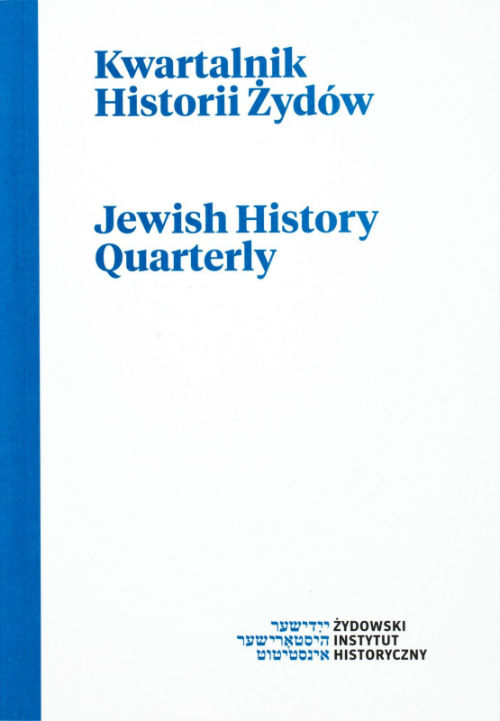Społeczność żydowska Kodnia w latach 1918-1942
Jewish Community of Kodeń in 1918-1942
Author(s): Andrzej TłomackiSubject(s): History
Published by: Żydowski Instytut Historyczny
Keywords: Kodeń; shtetl; kehillah; Holocaust in Lublin region
Summary/Abstract: The Jews were the largest ethnic minority in Kodeń (Biała Podlaska powiat) during the Second Republic. The number of Jewish inhabitants of Kodeń was around 600 persons. This state of affairs was due to the balancing of emigration (chiefly to USA and Palestine) and natural increase. During that time the total population of Kodeń was approximately 1,900 people. The Jewish community in Kodeń was one of eight Jewish religious communities in the powiat. In addition to the town itself, it also embraced the area of the neighboring Kostomłoty and Zabłocie communes. In 1938, it had over 700 members. In 1924, the community elected its first post-war council. The main responsibility of council members was to organize life inside the community. The council also represented the community before the authorities. The community paid the expenses of the rabbi and his deputy and their families. During the Second Republic, Kodeń had two rabbis. When the first one, Mosze Arje Fryduam, died in 1926, that position was held until the autumn of 1942 by Zejde Rabinowicz. By the late 1920s, Josel Gerszberg was elected to assist him as rabbi’s deputy. The Jewish community in Kodeń had only one shochet. Unlike the rabbi and his deputy, he had to earn his own living. For nearly 95% of Kodeń’s Jews, commerce and crafts were the main sources of income. Just before the outbreak of World War II, out of the 26 shops trading in Kodeń, only five were in Polish hands. Save for a handful of members of the Zionist Revisionists party and Frejhejt Cultural and Educational Association, the Jewish population of Kodeń was apolitical, hardly engaging in public affairs. Only at the time of parliamentary elections the Jewish voters became more active, casting their votes for the Union of Jewish Alliances. The Nazi occupation of Polish lands led to the annihilation of the Jewish population in the whole Kodeń commune. However, before that occurred, the Jews lived through a period of over a fortnight of relative freedom during the Soviet occupation. After September 20, 1939 Red Army troops seized Kodeń. Pursuant to the secret September 28, 1939 protocol, a demarcation line was drawn along the Bug. As a result, Kodeń found itself under German occupation. Together with the Soviet troops, which withdrew on October 9, some 40 Jewish families left the town. During the Nazi occupation Kodeń remained the seat of a commune. In November 1941, 2,459 residents were registered in the commune, out of who 167 were Jews. In the so-called open ghetto established at the beginning of 1940 and encompassing 30 rural cottages, local residents were placed together with resettled persons (e.g., 105 Jews from Kraków), altogether there were 528 Jews there. In autumn of 1942, the Germans took nearly 800 Jews to the ghetto in Międzyrzec Podlaski. The Germans murdered nearly 99% of the Jews who lived in Biała Podlaska powiat until the war. Of the total number of 14,850 Jews, only 69 survived the Nazi occupation.
Journal: Kwartalnik Historii Żydów
- Issue Year: 245/2013
- Issue No: 01
- Page Range: 127-137
- Page Count: 11
- Language: Polish
- Content File-PDF

